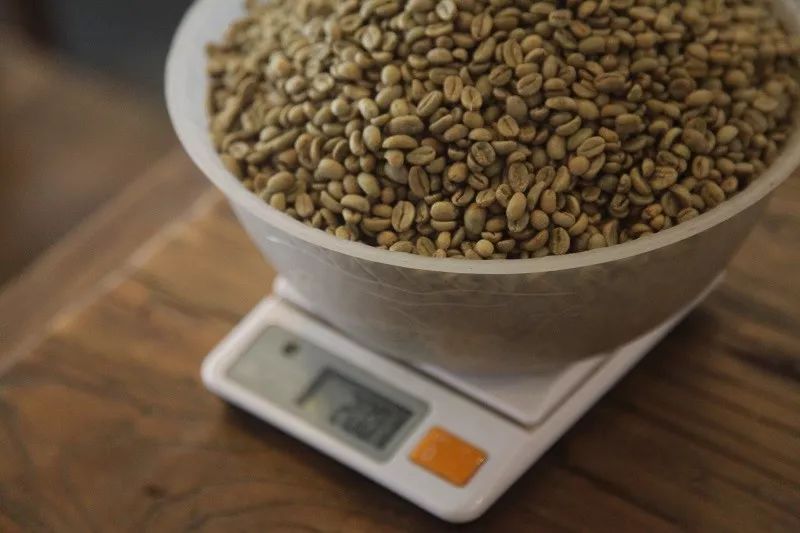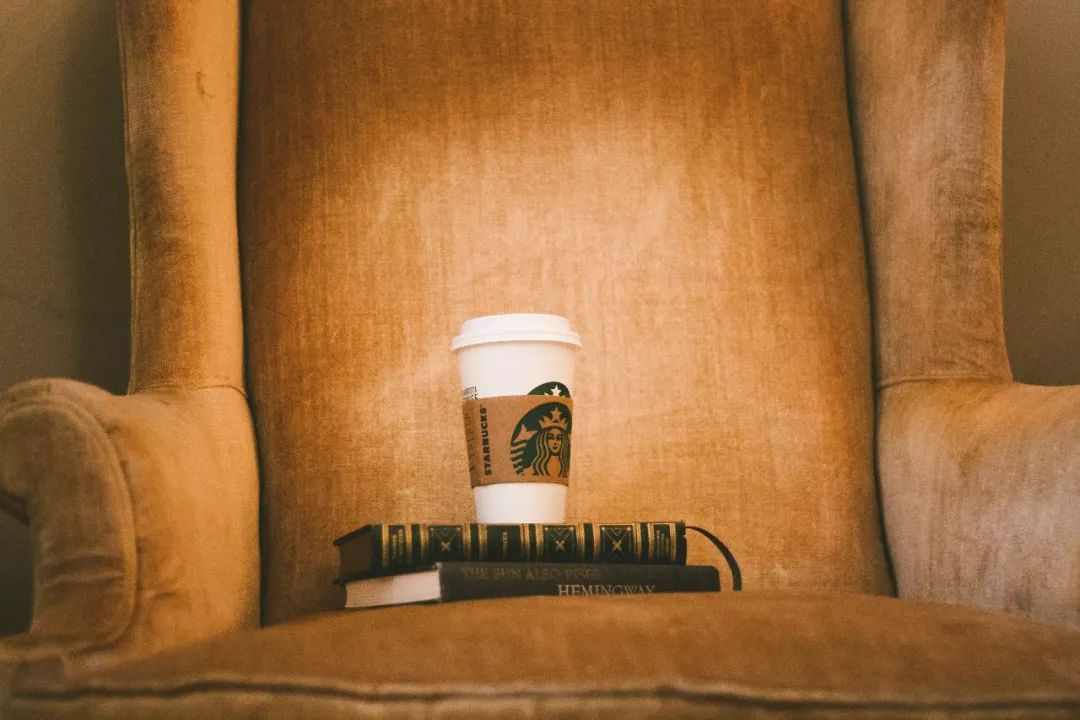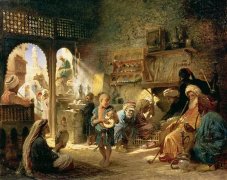Boutique coffee beans and commercial coffee beans, how on earth should coffee shops choose common beans?

From the perspective of the coffee market, coffee beans are mainly divided into two categories, commercial beans and high-quality coffee beans. In terms of price, high-quality coffee beans are several times more expensive than commercial beans. From a cost point of view, of course, the profit margin of choosing commercial beans will be very large, but the taste of coffee obtained from commercial beans is much lower than that of boutique coffee beans. It can be used to make lattes, cabbages and other Italian coffee.
Boutique coffee beans VS commercial beans, coffee shop how to choose?
Boutique coffee beans you need to know several characteristics of boutique coffee beans
The concept of boutique coffee is becoming more and more popular in recent years, but the concept of boutique coffee beans is actually quite vague. To put it simply, boutique coffee beans are high-quality raw beans, roasted with exquisite baking skills, and restore the unique taste of the coffee beans themselves, which belongs to only this kind of coffee beans. Roasted coffee beans are consumed during the best drinking period.
Characteristics of boutique coffee beans:
1. Boutique coffee beans must be high-quality beans with flawless beans.
two。 Boutique coffee beans must be excellent varieties, the produced coffee beans have a unique aroma and flavor, beans with personality. For example, Brazil has chocolate and Yega has citrus flavor.
3. The growth environment of boutique coffee beans also has higher requirements. Generally grow at an altitude of 1500 meters or even more than 2000 meters above sea level, with appropriate precipitation, sunshine, temperature and soil conditions. Such as the volcanic ash soil of Antigua, Guatemala, which provides conditions for the growth of boutique coffee.
4. The best way to harvest high-quality coffee beans is to harvest them manually.
5. Fine coffee beans are treated in a refined way. Careful washing and sun exposure, and the processing of all kinds of delicate raw beans give the coffee a "layered", "sour", "sweet" and "sweet" flavor.
6. Boutique coffee has a strict grading system. Go through a strict grading process to ensure the uniformity of quality. And its preservation and transportation in the process of protection is very important, such as temperature and humidity control, ventilation control, avoid odor adsorption and so on, if these do not do well, then no matter how high-grade beans will no longer become fine.
Characteristics of commercial coffee beans
Commercial beans generally mean that they are not very high-quality coffee beans, with low quality and high defect rates. in terms of price, high-quality coffee beans are several times more expensive than commercial beans. From a cost point of view, of course, the profit margin for choosing commercial beans will be very large. Like the kind of large-scale batch production and packaging is generally commercial beans.
In terms of the flavor of individual beans, the taste of coffee obtained from commercial beans is much lower than that of high-quality coffee beans. Generally, commercial beans will be used for blending. After mixing beans, coffee with good export taste can also be made.
This kind of commercial coffee beans are generally cheaper, and both raw coffee beans and roasting techniques can only be produced according to a batch standard. The biggest difference between boutique coffee and commercial coffee beans lies in their quality and price. Boutique coffee beans may cost 90 yuan a pound, while commercial beans may cost as little as 40-50 yuan a pound.

How to choose coffee beans in a coffee shop
Generally speaking, how to choose coffee beans depends on the positioning of the coffee shop itself. If your coffee shop pursues cost control, espresso is usually made with commercial beans. If you make boutique coffee and provide you with authentic freshly ground coffee, then boutique coffee beans will be the best choice, and the varieties that are usually the most commonly used are Brazil, Colombia, Blue Mountain, Yega Xuefei and Manning.
Commercial coffee beans mixed with coffee
When coffee is mixed from a variety of beans, the baker will bake two or four kinds of coffee beans at the same time, all from different producing areas and growing countries, and each kind of coffee is roasted in a different way.
To provide your favorite coffee flavors, they are all mixed at different rates (roasting and blending). Coffee is a natural product from plants, so it is a living and constantly changing thing. Every time you roast coffee, you also have to taste it, mixing about 2-3 different kinds of coffee beans. To achieve a balanced flavor and delicious taste, this is indeed a technical task.
Colombia, Nicaragua, Brazil-chocolate, nuts, caramel
Ethiopia, Tanzania, Rwanda-sweet, sour, nutty, lemon, sometimes sour
India, Indonesia, Papua New Guinea-botanical, spicy, salty
The industry generally uses low-acidity blended coffee, such as Vietnam Luodou, Brazil, Yunnan, Mantenin, Guatemala and other commercial grade beans. Italian coffee beans are usually deep-roasted, medium-deep roasted, and the oil will be good. Suitable for espresso, lattes and other milk coffee.
An ideal Espresso should be able to strike a balance between the various elements, taste bright, and feel sweet but not bitter in the throat after drinking it.
To put it more specifically, it should have moderate sour, bitter, sweet, rich taste, solid and mellow consistency, lasting, and make people feel as refreshing and sour as citrus.
Extract a cup of espresso
▼
-Water temperature | 93-94 ℃
-pressure | 9 ba
-freshly ground coffee powder | 20g (using electronic scale)
-Total weight of coffee | 40g (using electronic scale)
-brewing time | 25-28 seconds (using timer)

Boutique coffee beans Ethiopia
Ethiopia is an agricultural country with a history and tradition of coffee origin. Yega Chuefei is one of the producing areas south of Sidamo, with about 12 million people engaged in coffee production and is a major exporter of Arabica coffee beans in Africa. The high-quality coffee here is of excellent quality and is worth looking for. It has a soft taste, with wild flavor of wine, and slightly sour taste, unforgettable after drinking.
If you are very fond of African beans, it should be easy to find that Ethiopian beans are generally of different sizes and have significantly lower evenness than those in Kenya. Whether it is Yega Xuefei or Sidamo, whether it is washing or sunlight, sometimes the same batch of coffee beans can be seen to be significantly different in baking color and particle size. Nearly 2000 coffee varieties have been recorded in Ethiopia, including 1927 native varieties and 128 imported varieties. So just by looking at the appearance, Esther's coffee variety is "Grand View Garden", which has everything, long, short, thin, fat.

[Yechuefi aricha, Ethiopia] (light sun baking)-light fermented wine, sweet orange, spices, honey sweet, Aricha processing plant sun Ariga is the highest grade of G1 by ECX, from raw bean appearance, consistency, freshness to dry aroma and flavor are excellent.

[Yega Sherphine Woka, Ethiopia] (slightly roasted by water washing)-lemon, kumquat and white grape juice, the Waka Cooperative joins the famous Yejia Sheffield Coffee Farmers Cooperative Union to produce quality washing Ethiopia can reach the highest level of G1.

Boutique coffee beans Colombia
Colombia is one of the largest producers of high-quality coffee in the world, a bright pearl in the world coffee map and a coffee land blessed by God. Arabica coffee is grown on steep slopes 800 to 1900 meters above sea level and is hand-picked and washed.
Colombian coffee has a balanced flavor and a smooth taste, just like a gentleman in coffee. He has a wide range of producing areas, such as Medellin, Armenia and Manizales, which are commonly referred to as "MAM".
Colombia's boutique bean producing areas are mainly in the south, more than 1500 meters above sea level, including San Augustin, Huila in Huilan province, Popayan, Cauca in Cauca province, Nari ñ o province, and Tolima province, all of which have delicate sour and raspberry aromas, caramel aromas and full sweetness.
[Cauca Cauca] is a certified coffee producing area in Colombia, with an average altitude of 1758m-2100m. 80% of Cauca province is mountainous. The soil in the producing area has adequate nutrition for coffee growth. Low temperature at night and relatively high altitude slow down the growth of coffee. Coffee in Cauca producing areas has high acidity and commendable sweetness.

Boutique coffee beans Sumatra
Coffee cultivation in Mantenin, Sumatra, began in the 18th century, when it was planted near Aceh province on the north side of Lake Tawar. For a few days, most of the Sumatran coffee area is located in the south of Lindong, Subu and Takengon coffee. Sumatran coffee is not based on producing areas because there is little difference between planting areas, but picking and processing methods have a great influence on the flavor of Sumatra coffee. Indonesian coffee is mainly produced in Sumatra, Java and Sulawesi, of which "Mantenin" produced in Sumatra is the most famous.
Lintong is also known as Sumatran Coffee, Lake Tawa at the north end can be called Aceh Coffee or Lake Tawa Coffee, and the area between Lindong Coffee and Lake Toba can be called Manning.
Mainly from two producing areas:
One is the Aceh producing area, which includes five producing areas: Tawa Lake, Gaiyou Mountain, Gaiyou nationality, Yaziman and Takangong Manning.
The other is the producing area of North Sumatra, which is composed of four producing areas: Lake dopa, Lindong, Mandainin and Badak.
Manning is one of the most suitable coffee beans for deep roasting in the world. One of the famous reasons is that its own characteristics do not disappear after deep roasting. Mantenin's thick flavor and low acidity make it very popular in Asia. In fact, the high quality mantenin is also very suitable for medium and shallow baking, which can show a good fruit flavor at this degree of baking.
[Mantenin, Sumatra, Indonesia] (deep baking in traditional wet planing)-baked toast, nuts, pine, caramel, herbs, Mandarin coffee is produced in Lake dopa in Sumatra Province and Lake Tawa in Aceh. This is the famous "two lakes Shuangman", with a hilly fragrance that is unique to the earthy flavor of the primeval forest.
The aroma of Golden Manning Coffee is rich and thick, with clear high-quality acidity, high balance, sometimes nutty, high sweetness, rich and mellow flavor: baked toast, pine, caramel, cocoa, slightly herbaceous native flavor.

Boutique coffee beans Brazil
The largest coffee producer, which accounts for 1/3 of the world's coffee consumption, accounts for 1/3 of the world's coffee consumption and has a place in the global coffee market, although Brazil faces several times more natural disasters than other regions. but its acreage is enough to make up for it.
There are many kinds of coffee here, but its industrial policy is large and cheap, so there is not much premium coffee, but it is a good choice for mixing other coffees.
One of the most famous is Sandos Coffee, which tastes mellow and neutral. It can be boiled directly or mixed with other kinds of coffee beans to form a comprehensive coffee. It is also a good choice.
Other kinds of Brazilian coffee, such as Rio and Parana, can be produced in large quantities because they do not need too much care. Although the taste is rough, it is a kind of high-quality and inexpensive coffee, which has its own standards because it is distributed all over the country and varies in quality (NO.2-NO.8 according to the number of sundries, NO.13--NO.19 according to the size of beans, and six grades according to taste). Almost all Arabica species are of good quality and stable in price. The most famous ones are "Brazil Santos", Syracuse and Minas, which are the necessities of mixed and single bean coffee and are familiar to the public.
Taste characteristics: mild, bitter medium, soft aroma.
The best frying degree: medium baking, medium deep baking.
Brazilian flavor characteristics: comfortable sweet and bitter taste, the entrance is very smooth; with a hint of grass, the fragrance is slightly bitter; smooth and smooth, the aftertaste can be pleasant

Important Notice :
前街咖啡 FrontStreet Coffee has moved to new addredd:
FrontStreet Coffee Address: 315,Donghua East Road,GuangZhou
Tel:020 38364473
- Prev

Why is it difficult to find a vacant seat when Starbucks Shanghai Bakery has been open for more than half a year?
Professional coffee knowledge exchange more coffee bean information Please follow: more than half a year after the opening of the coffee workshop (Wechat official account cafe_style), it is still difficult to find a vacant seat in Starbucks Shanghai Bakery. On December 6, 2017, Starbucks selected Shanghai Bakery officially opened in Nanjing West Road to welcome guests. This is the first Starbucks since Seattle, the birthplace of Starbucks in 2014.
- Next

A unique method of monsoon stain treatment-- an introduction to the producing area and grading system of coffee in India
When it comes to Asian coffee, most people will first think of Mantenin in Indonesia, or Vietnamese coffee, Laos coffee, and Yunnan coffee. However, few people mention that Indian coffee has a long history, and it is also the first country in Asia to grow coffee. It has always had a place in the coffee world, and it is also a major country of global coffee production. Today is small.
Related
- What documents do you need to go through to open a coffee shop? coffee shop coffee shop certificate processing process
- How to purchase Coffee beans in small Cafe how to choose a suitable supplier for domestic Coffee supply Company
- How to drink Starbucks Fragrance White Coffee? how to make Australian White Coffee? what Italian coffee beans are recommended?
- The Story of Flora Coffee: the name of Flora Coffee Bean and the implication of the Flowers on Florna Coffee
- How much does a cup of coffee cost? How much is the profit of a cup of coffee? What is the profit of the coffee shop in a year?
- Yunnan small Coffee, known as "fragrant Coffee", introduces the characteristics of Alpine Arabica Coffee producing areas in Yunnan, China
- 2023 latest Starbucks full menu price list how much is a cup of Starbucks coffee what is better to drink the most popular hot and cold drinks recommended
- Starbucks different kinds of Coffee Price list Starbucks menu 2023 Top Ten Best drinks in Starbucks
- Starbucks Spring praise Comprehensive matching Coffee Bean theme Story Packaging implication and taste description
- The cost of a cup of coffee latte American coffee cost price and selling price

